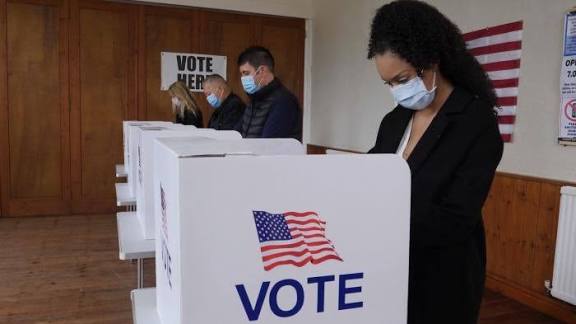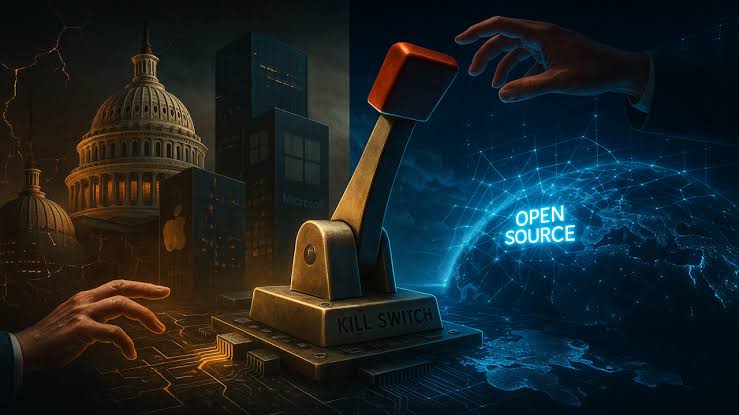White House Immigration Order Sparks: Nationwide Protests Overnight

Donald Trump has promised expanded immigration crackdown in several big cities with Democratic leadership in apparent retaliation. Today we will discuss about White House Immigration Order Sparks: Nationwide Protests Overnight
White House Immigration Order Sparks: Nationwide Protests Overnight
The United States awoke to turmoil after a sweeping new immigration order issued by the White House triggered a wave of demonstrations in cities and towns across the nation. Within hours of the announcement, crowds poured into streets, airports, government buildings, and public squares to voice their outrage. From Los Angeles to Chicago, Portland to Miami, the message was clear and unified: millions of Americans believe the order goes too far.
This article provides a deep, comprehensive look at the new immigration order, why it has ignited such explosive backlash, how the protests spread so rapidly, and what these events may mean for the future of American democratic governance, civil liberties, and immigration policy.
Understanding the Immigration Order

The White House’s new immigration directive — formally titled Executive Order 14159: Protecting the American People Against Invasion — represents one of the most aggressive expansions of federal immigration enforcement powers in modern U.S. history.
The order includes several highly controversial measures:
1. Expanded Expedited Removal
Authorities are granted the power to deport certain immigrants without a court hearing. This includes individuals who cannot immediately prove long-term residence in the country. Critics argue this undermines due process and places vulnerable people at risk.
2. Registration Penalties
The order criminalizes failure to register as an undocumented immigrant. This has sparked fear across millions of mixed-status households, many of whom worry that registration lists could be used for future deportation sweeps.
3. Threats to Sanctuary Cities
Federal funding would be denied to states and cities that limit cooperation with immigration enforcement agencies. Mayors and state officials immediately voiced concern that this would jeopardize essential services unrelated to immigration.
4. Revocation of Previous Immigration Protections
Several earlier policy measures — including guidance that offered more humane handling of asylum seekers and protection for unaccompanied minors — were revoked. Immigrant advocates say this represents a return to harsh crackdowns seen in past decades.
5. Military-Policing Authority
Perhaps the most alarming for civil rights observers, the order includes provisions enabling federal agencies to request military support for immigration enforcement during times of “national emergency.” Many view this as dangerously vague and ripe for abuse.
Why the Order Triggered Immediate Outrage
The ferocity of the backlash can be traced to several overlapping concerns.
An Appearance of Authoritarian Overreach
Opponents argue the order gives too much power to the executive branch. By bypassing Congress and expanding enforcement authority through fiat, they say the administration is eroding democratic norms and concentrating power in the presidency.
Civil Liberties Fears
The expanded use of expedited removal and the criminalization of undocumented status raise concerns about constitutional protections, racial profiling, unlawful detentions, and erosion of due process rights.
Family Separation Fears
Advocacy groups warn that swift removals and penalties could result in the separation of parents and children, even among families that have lived in the U.S. for years. These fears revived painful memories from past immigration crackdowns.
Militarization of Domestic Policy
The possibility of using military or federalized National Guard troops in enforcement has sparked outrage from civil liberties organizations, legal scholars, governors, and mayors. Many view the move as a violation of long-standing laws limiting domestic military deployment.
Community Trauma
Immigrant communities — many of which already faced stress from earlier enforcement waves — responded with fear, anger, and grief. Reports of ICE raids and mass detentions contributed to the emotional atmosphere that fueled the protests.
How the Protests Spread So Quickly
The rapid mobilization was not spontaneous; it was fueled by networks, movements, and organizations that had been building momentum for months.
1. The 50501 Movement
This grassroots coalition had previously organized rallies across all 50 states. Its decentralized structure allowed local organizers to quickly coordinate marches, vigils, and demonstrations within hours of the new order.
2. The No Kings Movement
Formed in response to concerns about executive overreach, No Kings mobilized tens of thousands nationwide. Its message — rejecting authoritarianism and the concentration of power — resonated strongly in the wake of the immigration order.
3. Social Media Mobilization
Platforms like X, TikTok, Instagram, and livestreaming apps were flooded with calls to action, protest locations, legal guidance, and emotional testimonial videos from affected families. Hashtags related to the order trended globally within minutes.
4. Immediate Legal and Political Reaction
Statements from governors, state attorneys general, and mayors opposing the order energized the public. Some state officials announced they would legally challenge the order’s constitutionality.
5. Existing Community Networks
Immigrant rights organizations, labor unions, churches, student groups, and advocacy collectives rapidly coordinated transportation, communication, and legal aid.
Scenes From Across the Nation
Los Angeles
Los Angeles saw some of the largest protests, with tens of thousands gathering around federal buildings, immigration offices, and major intersections. Demonstrations lasted late into the night, many chanting “No more raids!” and “Families belong together!”
Chicago
Chicago’s protests centered around downtown and immigrant-rich neighborhoods. Community organizers offered water, shelter, and legal support as thousands arrived from across the Midwest.
Portland
Portland became a focal point after reports that federal forces had attempted to assist local enforcement. Protesters blocked streets and bridges, and several city officials vowed legal action to protect their residents.
Seattle and Spokane
Protests in the Pacific Northwest were marked by large youth turnout. Marchers carried banners calling for due process and the abolition of expedited removal procedures.
New York City
Major crowds gathered at airports, recalling the spontaneous airport protests during earlier immigration bans. Thousands chanted “Let them in!” as lawyers provided free support to detained travelers inside.
Smaller Towns Join In
What surprised many observers was the strength of participation in small-town America: rural counties, suburban downtowns, and mid-sized cities hosted rallies ranging from dozens to thousands.
Responses From Government and Officials
White House Stance
The administration has defended the order as necessary for national security. Officials have stated that they will not back down despite protests, characterizing some demonstrators as “agitators” or “lawless elements.”
State Leaders Push Back
Governors from several states have condemned the order, calling it unconstitutional. Some have vowed to challenge it in federal court.
Mayors Defy the Threat to Sanctuary Cities
Mayors from dozens of major cities said they will not modify local sanctuary policies, arguing that public safety depends on community trust rather than fear of federal immigration agents.
Legal Experts Warn of Constitutional Crisis
Law professors and civil rights lawyers argue that the threat of military involvement in domestic enforcement could constitute a violation of long-standing federal restrictions.
Effects on Communities and Families
Widespread Fear
In many immigrant communities, schools, workplaces, and neighborhoods reported significantly reduced activity. Some families stayed indoors, unsure whether they were safe.
Legal Clinics Overwhelmed
Immigration lawyers and advocacy groups reported an immediate influx of requests for legal aid. Many held emergency “know-your-rights” workshops.
Children and Students Impacted
Teachers reported students crying in classrooms, worried their parents might be taken during the day. Advocacy groups stressed the mental health impact on children.
Economic Concerns
Farmers, restaurant owners, and small businesses — many of whom rely on immigrant labor — expressed concern that the order would disrupt their workforce and local economies.
Broader Political and Social Implications
1. A Turning Point in U.S. Immigration Policy
The order could mark a fundamental shift in how the federal government handles immigration — toward a heavily enforcement-driven model with minimal safeguards.
2. Polarization Deepens
The divide between those calling for strict immigration enforcement and those advocating humane, reform-based policies continues to widen.
3. Future Elections Could Be Shaped by This Moment
Immigration is already emerging as a central issue for upcoming election cycles. Candidates on both sides are using the protests to galvanize their bases.
4. Civil Liberties in the Spotlight
The use of federal forces and threats to sanctuary cities has revived debates over states’ rights, due process, and the appropriate limits of presidential authority.
Possible Scenarios Moving Forward
Scenario 1: Courts Block Parts of the Order
Legal challenges from states could halt key components — particularly the military enforcement provisions.
Scenario 2: Protests Intensify
If enforcement expands, protests may grow even larger, perhaps rivaling previous nationwide movements in scale.
Scenario 3: Federal Negotiation or Amendment
Mounting political pressure could force the administration to soften components of the order or revise penalties.
Scenario 4: Continued Enforcement Despite Backlash
If the administration remains firm, the nation may face a prolonged period of protest and legal conflict.
Conclusion
The new White House immigration order has ignited one of the largest and most widespread protest movements in recent U.S. history. For millions, this moment symbolizes more than an immigration issue — it represents a battle for democracy, human rights, and the very soul of the nation. As protests continue, legal challenges mount, and political tensions intensify, the country stands at a historic crossroads.
Whether this moment leads to reform, escalation, or a redefinition of presidential power remains to be seen. But one thing is certain: the American public is speaking loudly, and the world is watching.
How useful was this post?
Click on a star to rate it!
Average rating 0 / 5. Vote count: 0
No votes so far! Be the first to rate this post.
About the Author
usa5911.com
Administrator
Hi, I’m Gurdeep Singh, a professional content writer from India with over 3 years of experience in the field. I specialize in covering U.S. politics, delivering timely and engaging content tailored specifically for an American audience. Along with my dedicated team, we track and report on all the latest political trends, news, and in-depth analysis shaping the United States today. Our goal is to provide clear, factual, and compelling content that keeps readers informed and engaged with the ever-changing political landscape.




